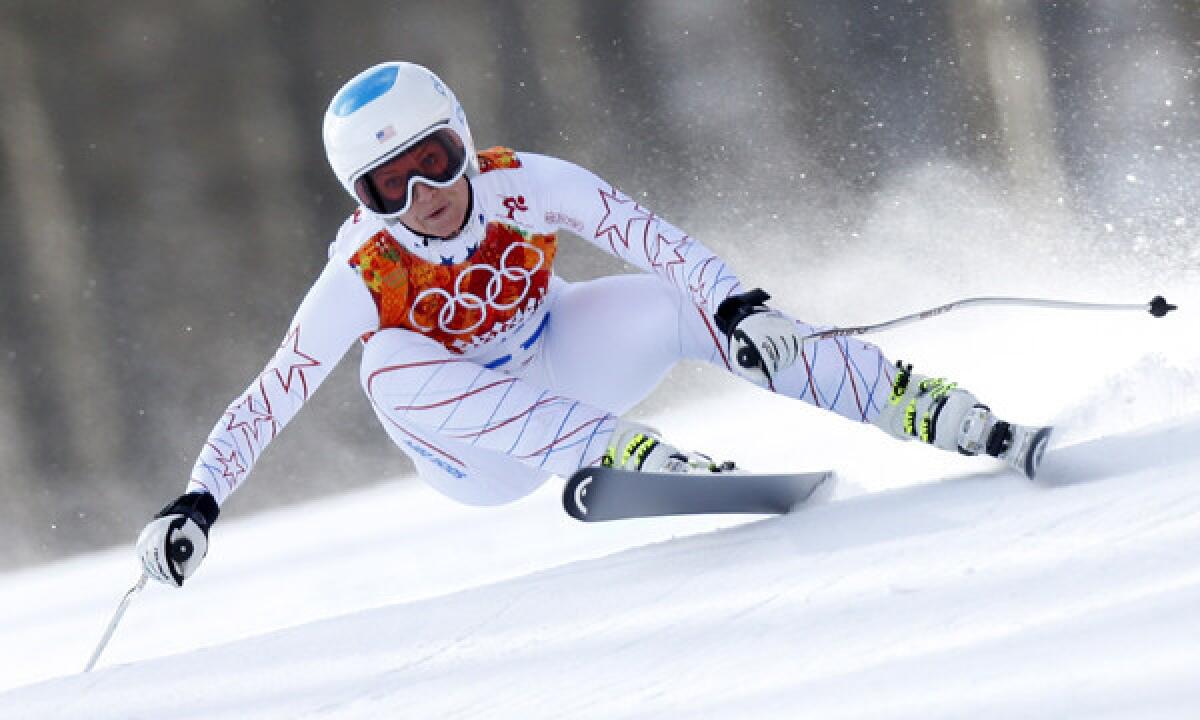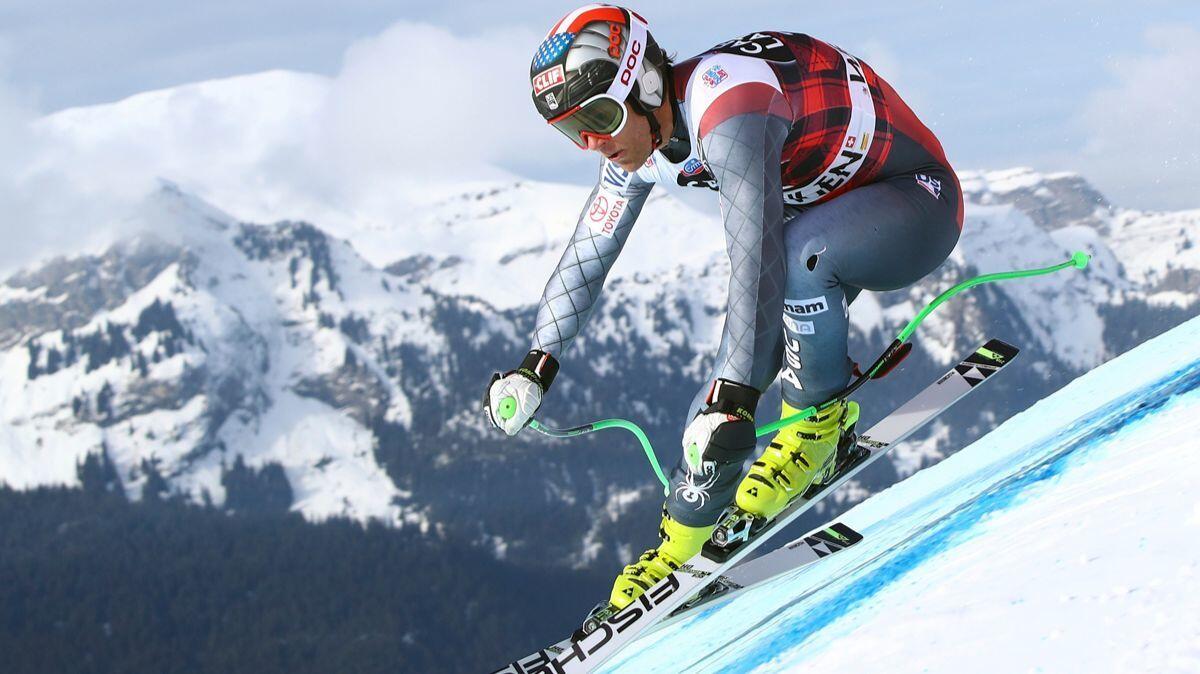U.S. ski-team members on the mend — mentally and physically — as Winter Games approach

- Share via
Laurenne Ross had sustained a fractured pelvis and a torn anterior cruciate ligament in her left knee. She suffered multiple shoulder dislocations, broken fingers, sprained ankles and concussions. Needed dozens of stitches to close gashes across her face.
None of those injuries prepared the veteran U.S. Olympic Alpine skier for the split-second on Maine’s Sugarloaf Mountain last March. Speeding around the sixth gate in the giant slalom, Ross slipped and her right ski caught the snow at the wrong angle.
“I’m not even sure what the crash was like. All that remained was pain,” Ross later wrote on her blog. “I could barely breathe — I was choking on my sobs and violently shaking throughout my entire being. The pain penetrated to my very core. ... It was awful, horrific, unbelievable — and it was terrifyingly real.”
The collision ripped apart her right knee, the ACL, meniscus and more, an experience all too common in a sport where a wipeout can be an instant away.
Only weeks before the Winter Olympics in Pyeongchang, Ross is still learning to trust her rebuilt knee. Steven Nyman, the top U.S. downhiller in recent years, is coming back from a similar knee injury. Julia Mancuso, looking to qualify for her fifth Games, returned to competition in December for the first time in two years after reconstructive surgery on her right hip. Two-time Olympic gold medalist Ted Ligety is recovering from back surgery last year. Breezy Johnson fractured her left leg. Travis Ganong, who would have been a medal threat in the Pyeongchang speed events, won’t compete because of a torn ACL sustained last month. The list goes on.
“You’re really lucky if you can stay on your feet all the time,” Mancuso said. “It could just take one small bump to really throw you.”
One study found that World Cup Alpine skiers sustained an “alarmingly high” 36.7 injuries per 100 athletes. Another study of French Alpine skiers showed 28% had suffered ACL injuries at least once. A third study, using data from the International Ski Federation’s injury database, put the relative knee injury rate at 3.2 per 1,000 runs, half of the injuries resulting in absences of 28 days or more.
“We know that it’s probably inevitable that we’re going to sustain a very intense injury,” Ross said. “I’ve become more and more comfortable with that and accepted that.”
She uses journal entries and blog posts to help process what happened to her knee and the mental hurdles of returning. She doesn’t want to hide.
“I know I am strong. I am tough. I am a great skier,” Ross wrote on her blog. “But I am so incredibly scared, for so many reasons. I am terrified of falling again ... which I know is inevitable. I am frightened by the prospect of enduring the same pain I experienced. I am scared of my own expectations. And I am most of all fearful of the future.”
The 29-year-old from Bend, Ore., plays several instruments, dabbles in songwriting and performs indie folk music. She is also the best U.S. speed skier not named Lindsey Vonn. At the Pyeongchang test event in February, Ross finished fourth, a half-second behind Vonn.

You’re really lucky if you can stay on your feet all the time. It could just take one small bump to really throw you.
— U.S. Olympic Alpine skier Julia Mancuso
Ross won the U.S. championship in the Super G in March, but it wasn’t until December that she returned to World Cup competition. Finishing 30th in the event at St. Moritz, Switzerland, represented a significant step forward. So did her first downhill, when she placed 13th on Jan. 14 at Bad Kleinkirchheim, Austria.
“The fear that I experience isn’t so much associated with specific injuries as it is with the fear of crashing,” Ross said before her return to competition. “When I get scared, it’s not really, ‘Oh, I could break my back’ or ‘I could break my leg.’ It’s, ‘I don’t want to do this section. It’s crazy. It’s terrifying.’”
Nyman, a three-time Olympian, is on a similar journey.
“I’m still being patient,” he said. “When you’re rehabbing, you need to push to the limit, but if you push beyond, you’re taking several steps back.”
Nyman’s return to the World Cup circuit came at Val Gardena, Italy, in late December, when he came in 41st in the downhill.
The night before Ross returned at St. Moritz — 8 ½ months after the crash in Maine — she tried to sum up the journey.
“So tomorrow is the day when I begin,” Ross wrote on her blog. “And it feels so good to know that I am going to take that step. Scary. Terrifying, even, but so good. ...
“Facing it with trust and with courage. Facing it with the mind-set of being present, bringing joy to it, bringing fire and passion and hunger. … like I used to, but slightly different: I am older, wiser, more whole and more myself.”
Twitter: @nathanfenno
More to Read
Go beyond the scoreboard
Get the latest on L.A.'s teams in the daily Sports Report newsletter.
You may occasionally receive promotional content from the Los Angeles Times.











